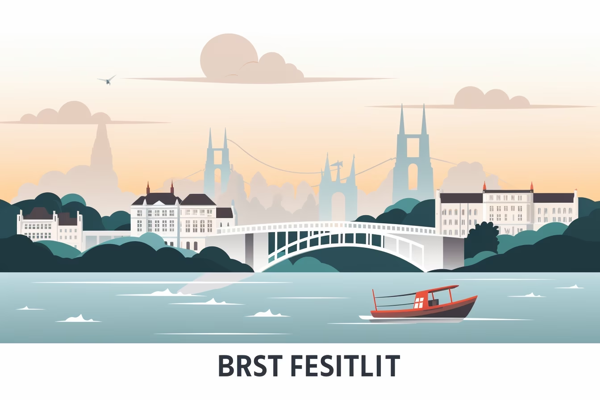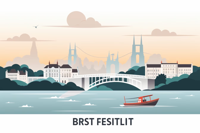Mastering the Art of Bristol Paper: A Comprehensive Guide to Choosing the Perfect Drawing Surface
When it comes to the world of artistry, one essential aspect that often goes overlooked is the choice of drawing surface. Whether you're a beginner or a seasoned artist, selecting the right paper can greatly impact the outcome of your artwork. In this comprehensive guide, we will explore the facinating world of Bristol paper artistry and provide you with essential tips on choosing the perfect drawing surface.
Choosing the Best Drawing Paper for Beginners
If you're just starting your artistic journey, it's crucial to choose a drawing paper that is beginner-friendly.
Strathmore 300 Series Bristol Smooth Pad is an excellent option for beginners due to its smooth surface and durability. This type of paper allows for effortless pencil strokes and erasing, making it ideal for practicing and refining your drawing skills.
Different Types of Pencil Drawing Paper
Pencil drawing enthusiasts have a variety of options when it comes to selecting the perfect paper for their artwork. The most common types of pencil drawing paper include:
- Regular Bristol Paper: This type of paper is versatile and suitable for a wide range of pencil drawing techniques. Strathmore 300 Series Bristol Smooth Pad offers a smooth surface that allows for precise details and shading.
- Vellum Bristol Paper: Vellum paper has a slightly rough texture compared to regular Bristol paper. It is often favored by artists who prefer a more textured look in their pencil drawings.
- Plate Bristol Paper: Strathmore 500 Series Bristol, 2-Ply Plate Surface has an ultra-smooth surface that is perfect for detailed pencil work. It is commonly used by artists who require intricate linework and fine details in their drawings.
Exploring Pastel Paper
If you're a fan of pastel art, choosing the right paper is essential to achieve vibrant and long-lasting results. Pastel paper is specifically designed to hold the powdery texture of pastels, allowing for better blending and layering. This type of paper, such as
Bienfang Bristol 9-Inch by 12-Inch Paper Pad, comes in a variety of colors and textures, offering artists the opportunity to experiment and create unique effects in their pastel artwork.
Navigating Watercolor Paper
Watercolor enthusiasts know the importance of using the correct paper to achieve optimal results. Watercolor paper is specifically engineered to withstand the application of water and pigments without warping or buckling. It comes in different thicknesses, known as "weights," which determine the paper's durability and ability to hold water. Heavier weights, like
Neenah Cardstock - Heavyweight, 110 lb/199 gsm Index, are generally recommended for more intense watercolor techniques.
The Significance of Acid-Free Paper
When it comes to preserving your artwork for years to come, choosing acid-free paper is crucial. Acid-free paper is manufactured using materials that neutralize acidity, ensuring that the paper remains stable and prevents yellowing or deterioration over time. This type of paper, such as
Strathmore 300 Series Bristol Smooth Pad, is highly recommended for artists who wish to create long-lasting and archival-quality artwork.
Understanding the Difference Between Acid-Free Paper and Archival Paper
While acid-free paper is an excellent choice for preserving artwork, it's important to note that not all acid-free papers are considered archival. Archival paper goes through additional processing to enhance its longevity and resistance to fading. If you're looking to create artwork that can withstand the test of time, investing in archival paper, like
Strathmore 346-1 Paper 300 Series Sequential Art Bristol, is highly recommended.
Tips on Paper Weight and Size for Pencil Drawing
When selecting paper for pencil drawing, it's essential to consider both the weight and size of the paper. Paper weight refers to the thickness and sturdiness of the paper, with higher weights indicating a more durable surface. For pencil drawing, a weight of around 90-110 lb (or 190-260 gsm) is generally recommended.
As for paper size, it ultimately depends on your personal preference and the scale of your artwork. Common sizes for pencil drawings range from 9x12 inches to 18x24 inches, but you can choose larger or smaller sizes based on your needs.
Choosing the Right Side of the Paper
Many artists may overlook the importance of using the correct side of the paper for their drawings. Bristol paper, for instance, often has a smoother side and a slightly rougher side. The smoother side is typically preferred for detailed pencil work, while the rougher side may be suitable for achieving a more textured look. Experimenting with both sides can help you determine which one suits your artistic style and desired effect.
Opting for Major Brands
When it comes to choosing drawing paper, it's generally recommended to opt for major brands that specialize in art supplies. These brands have a reputation for producing high-quality paper that meets the standards of professional artists. While there are many excellent options available, some trusted brands include
Strathmore,
Canson, and
Bienfang.
Additional Resources for Further Reading
If you're interested in delving deeper into the world of Bristol paper artistry, there are numerous resources available to expand your knowledge. Books such as "The Artist's Complete Guide to Drawing on Bristol Paper" by Kathryn Temple and online tutorials from reputable art communities can provide valuable insights and techniques to help you master the art of Bristol paper.
In conclusion, choosing the right drawing surface is a crucial step in mastering the art of Bristol paper. Whether you're a beginner or an experienced artist, understanding the different types of paper available and their specific characteristics can greatly enhance your artistic journey. By considering factors such as paper type, weight, size, and even the side of the paper you use, you can create artwork that truly shines. So, grab your favorite pencils, pastels, or watercolors, and let the world of Bristol paper artistry inspire your creativity!






morphonaeticness - October 17, 2023
Wow, this guide is super helpful! I've always wondered about the different types of Bristol paper and which one to choose. Now I feel more confident in my art supply shopping. Thanks!
pookiesnackenburger844 - October 16, 2023
Wow, great post! Really useful info on choosing the right bristol paper. Can't wait to try out some of your recommendations. Thanks for sharing!
Locdogg857 - October 15, 2023
Great guide! Really helped me understand the different types of Bristol paper and how to choose the best one for my drawings. Thanks for sharing!
urnst844 - October 14, 2023
Great article! Really helped me understand the different types of Bristol paper and how to choose the right one for my drawings. Thanks for sharing this valuable information!
Full-On - October 13, 2023
Wow, this guide is so helpful! I've been struggling to choose the right Bristol paper for my drawings, and this article answered all my questions. Can't wait to try out some of the recommended brands! Thank you!